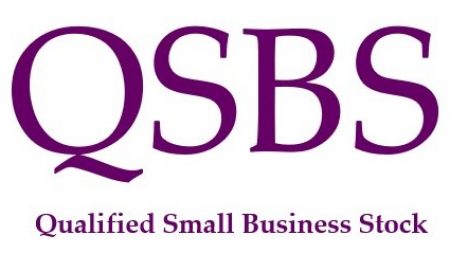QSBS is the one of the biggest loopholes in the tax law. What is QSBS?
If you invest in a qualified small business after September 27, 2010, and hold your stock for more than five years, when you sell your stock you will have no federal tax on the first $10,000,000 of gain.
A qualified small business is:
- A domestic C corporation
- Other than a DISC, a former DISC, a corporation with a Section 936 election in effect (including direct or indirect subsidiaries), a RIC, a REIT, a REMIC, or a cooperative
- Which, at all times since August 10, 1993, and up to the time immediately following the issuance of your stock, had less than $50M in cash plus adjusted asset basis
- For this purpose, you aggregate all corporations in the same parent-subsidiary control group (defined as more than 50% owned)
- The adjusted basis of contributed property includes any built-in gain at the time of contribution
- Which is not a services business.
- Prohibited industries include: Any business which engages in the performance of services in the fields of health, law, engineering, architecture, accounting, actuarial science, performing arts, consulting, athletics, financial services, brokerage services, or any trade or business where the principal asset of such trade or business is the reputation or skill of one or more of its employees, etc.
In addition, to get the favorable rate:
- You must have received your stock directly from the corporation in exchange for cash, services, or property other than stock that was not QSBS.
- The corporation cannot have repurchased a significant amount of its own stock.
- There is a company-level and stockholder-level 5%, 2%, and $10,000 test and in each case, all three tests have to be violated for there to be a problem.
- The corporation must use at least 80% (by value) of its assets in the active conduct of one or more qualified trades of businesses, during substantially all of your holding period.
- The 80% threshold is lowered if the excess assets are being kept for working capital or R&D needs. For C corps that have existed two years, my rule of thumb in applying the active business test is to compare the enterprise value of the Company determined by the 409A valuation to the amount of cash and other short-term investment assets on the company’s financial statements, and to be comfortable only if the company’s valuation is at least 50% higher than the latter. So, for example, if there is cash and other short-term investment assets of $5M, then if the total value of the company is at least $7.5M, then we know that the former assets will be not more than two-thirds of that total and we’re ok under the relaxed threshold.
- Additionally, the corporation fails the active business test, during any period in which more than 10% of the value of its assets (in excess of liabilities) consists of stock or securities in other corporations which are not subsidiaries, unless such amounts fit within the working capital asset/R&D exclusion.
- If you received your stock for appreciated property, the favorable QSBS rate will only apply to the appreciation that occurs after you receive the stock, and if your holding period in the contributed property reaches back to before September 28, 2010, even the portion that qualifies for the QSBS rate will receive a rate higher than 0% (~7-16.88%).
Mike Baker frequently advises with respect to qualified small business stock. He possesses a breadth and depth of experience in tax and employee benefits & compensation law that spans multiple decades. For additional information, please contact mike@mbakertaxlaw.com.

